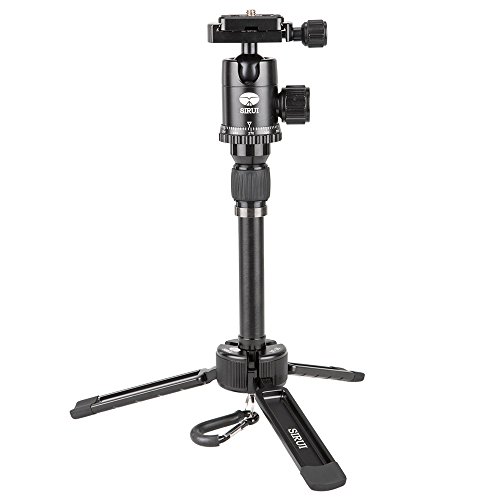It’s outrageous what original manufacturers charge for their branded batteries. This is why I’m a big proponent of 3rd party camera batteries and why I’ve always purchased them for my personal cameras. When a rep. for Vemico reached out to me for a possible review, I jumped on the opportunity because you can never have too many spares (especially if you use older Sony mirrorless cameras).
I currently use two types of Sony batteries, the NP-FW50 and the NP-FZ100. The NP-FW50 currently costs $49.99 each and the NP-FZ100 costs $78 each at the time of this post. My first Sony camera was the A7RII. One complaint often made about this camera is that it has poor battery life. This is simply because the NP-FW50 battery that it uses is small and the A7RII uses a lot of power. I currently own 7 NP-FW50 batteries and EASILY go through 4 batteries on a full day’s work. The A7RIII improved on battery life with its larger NP-FZ100 battery and I currently own 2 of them. I’ve been able to shoot an entire wedding with one battery with some intermittent charging during down time in between events. This larger battery is greatly appreciated but it comes at a cost. $78 per battery is a bit steep, which is why I only own 2.
This is where the Vemico batteries come in. The Vemico NP-FW50 battery set currently sells for $31.99 for TWO batteries, two battery cases, a dual battery charger, a UBS-C cable and a carrying case that holds everything. The Vemico NP-FZ100 battery set comes in a similar package and costs $52.99. Compared to OEM, the Vemico options are an absolute steal EVEN IF we were getting just the batteries, which we’re not. Even compared to other 3rd party battery manufacturers, Vemico’s prices are still very competitive if not better.
Over the years, I’ve tried quite a few batteries from different 3rd party manufacturers. Although they’ve all worked, I’ve never been overly satisfied. I’ve never done any scientific testing, but I’ve always felt that the OEM batteries were better or have more of a charge. One thing to note about 3rd party batteries is that they very often will advertise a very high mAh capacity, higher than that of the OEM battery. This is great, but it’s often just false advertising and the batteries drain pretty quick. Again, I haven’t done any testing but this is how I feel after years of experience with my batteries. Even so, it is still cheaper to buy multiple 3rd party batteries than one OEM battery. You can buy more than enough 3rd party batteries to compensate for the difference in battery capacity.
The quick drain was something that I was also expecting with the Vemico batteries. I can’t vouch for their long term use as I’ve only been using them for a week, but from my initial uses, I can tell that these batteries work much better than the other 3rd party brands that I’ve tried. During usage, they seem to last much longer and the battery percentage indicator doesn’t drop as quick.
One thing that I’ve found interesting about the Vemico batteries is their ability to hold a charge when the camera is off. If you didn’t know, many Sony cameras continually draw power even when the camera isn’t on. This is frustrating because you can leave a fully charged battery in the camera for a few hours only to come back to a few percentage gone. This does not seem to be as big of a problem with the Vemico batteries. I’m currently typing this post about 7 hours after shooting 20 minutes worth of 4K video and the battery STILL shows 100%. This is great. Even with my OEM batteries, there is no doubt that the indicator would’ve dropped at least a few percent. *UPDATE* Over 24 hours later and the battery indicator still shows 100%.
Another thing that I like quite a bit about these Vemico batteries is the overall presentation. Everything comes in a nice carrying case. Open up the case and you get more cases to hold the batteries. In the case of the NP-FW50 package, you even get precut foam to hold everything in place. The NP-FZ100 set didn’t come with the foam and this is likely because it’s a newer battery and Vemico reuses the same parts throughout there battery line and just didn’t have the foam for it. Either way, the carrying case and battery cases are a nice touch.
The included double battery charger is also appreciated. This is something that you typically have to purchase separately and costs around $10. I have way too many batteries to be using a single battery charger so this is a must! However, the one included is nothing new. I actually have one that’s very similar because these are mass produced chargers that manufacturers buy and slap their logos on. What’s different with this one is the USB-C interface. The charger that I already have uses a micro USB interface. Having USB-C here is a pain because it’s another cord to carry from what I already do for the other chargers but it’s nice to know that this interface will be future proof for awhile.
Overall, I’m pretty happy with these Vemico 3rd party batteries. I’ve been consistently using them and enjoy them as much as I can enjoy batteries. If you’re looking for a cheaper alternative to OEM batteries for your cameras, check out the options from Vemico.
If you're considering on buying any of the products mentioned, please support my work by using the links below.
Vemico Storefront https://amzn.to/2ZNG2eL
Vemico NP-FZ100 Battery Charger Set https://amzn.to/2PIX3qT
Vemico NP-FW50 Battery Charger Set https://amzn.to/2NLA9wa
Want to support my work?
Consider visiting the shop and buying "Absolutely Nothing" https://www.HaiHoangTran.com/shop/absolutely-nothing
or
Become a Patron!
https://www.patreon.com/HaiHoangTran
or






















